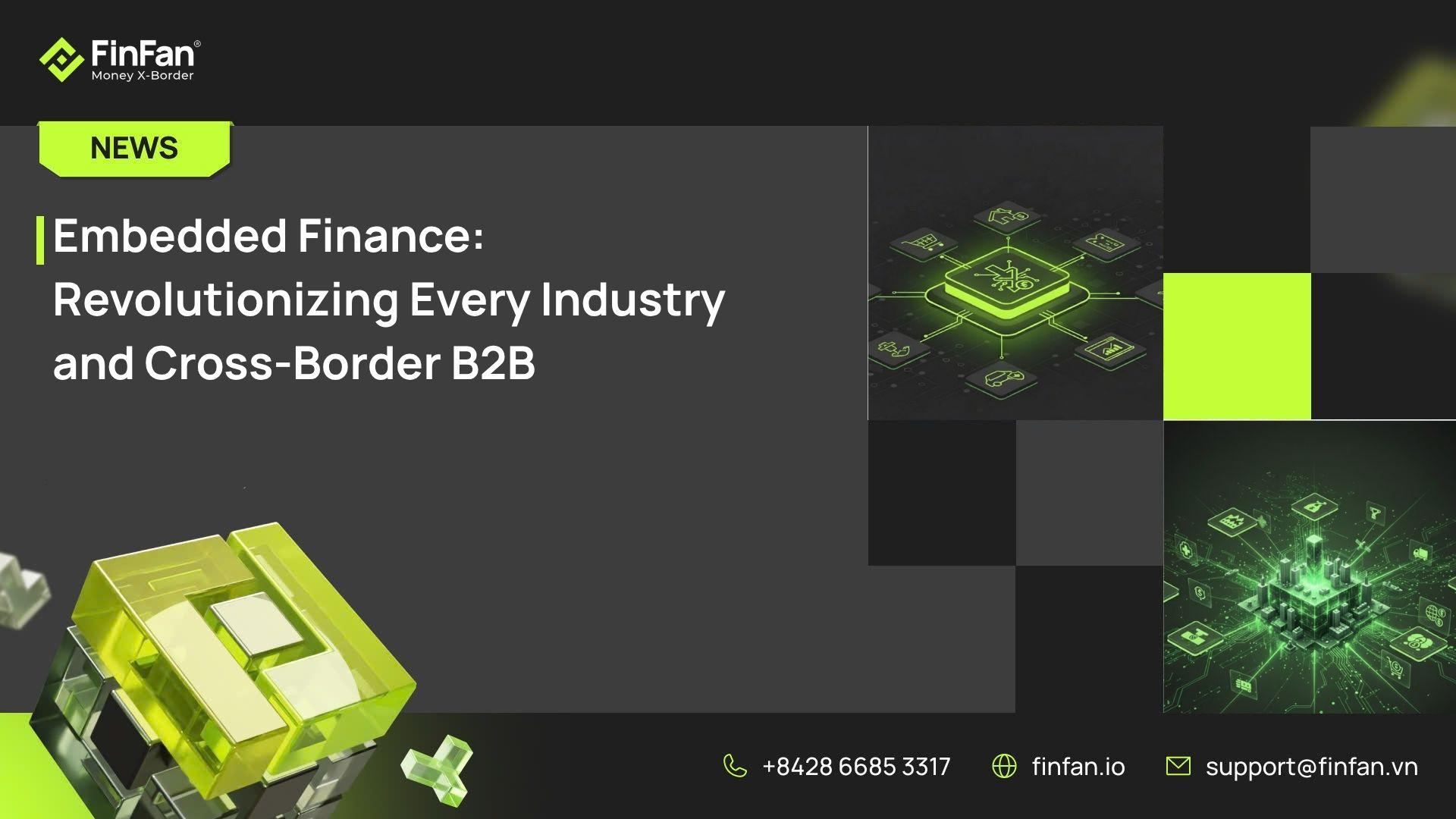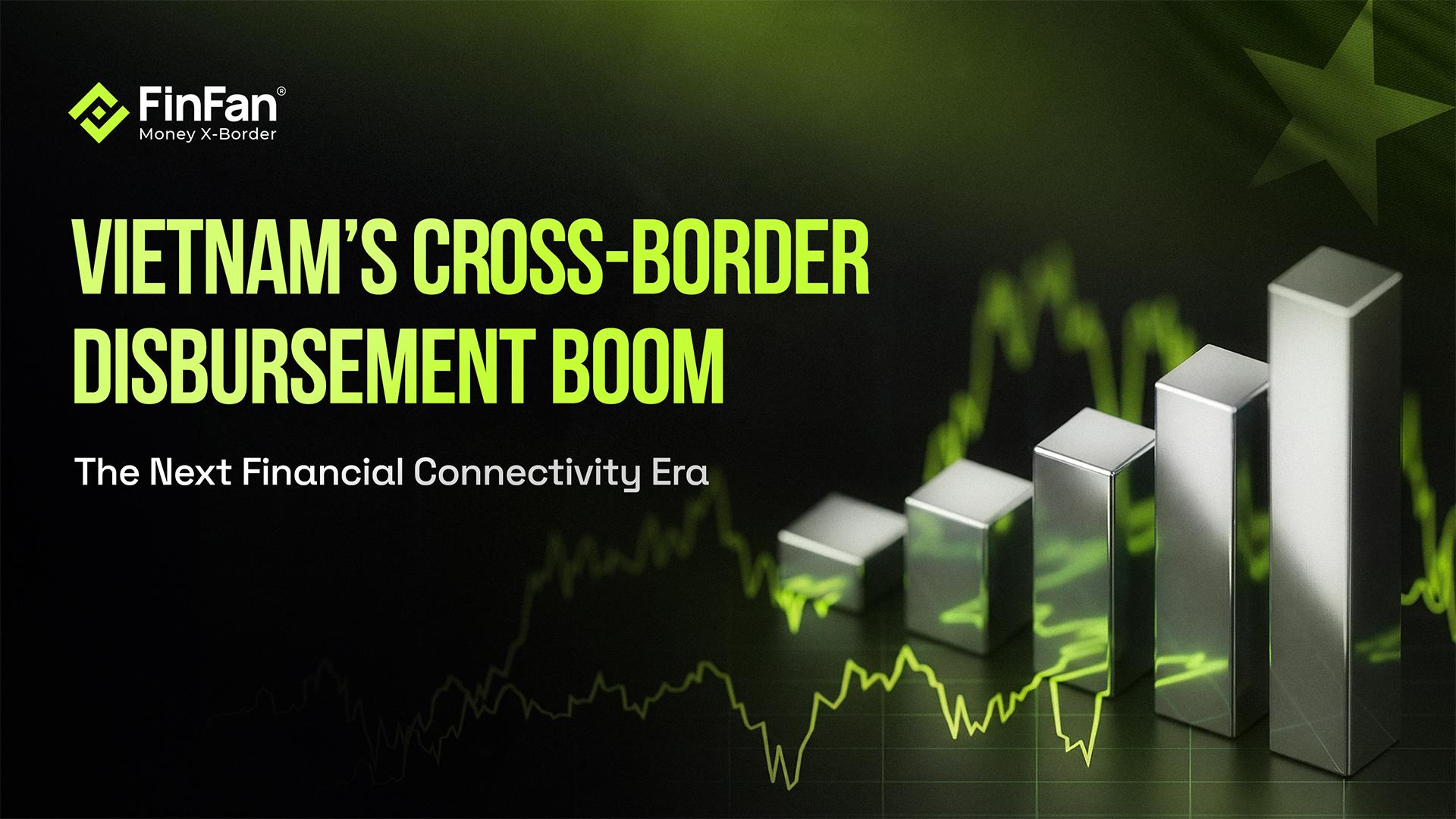Embedded Finance: Revolutionizing Every Industry and Cross-Border B2B

Embedded Finance (EF): Seamless Integration of Financial Services Across All Industries
Embedded Finance (EF) is redefining how we interact with money. Unlike the traditional model, where a user must go to a "destination" (a bank or an independent Fintech app) to transact, EF is the seamless integration of financial services, such as payments, lending, or insurance, directly into the non-financial app or platform used daily. The core power of EF lies in eliminating all "friction." Instead of interrupting the customer experience, financial services are delivered precisely at the "point-of-need."
This is not just a minor trend; it is a macroscopic structural shift. The global EF market is growing aggressively, estimated at $148.38 billion in 2025 and projected to grow to approximately $1,732.53 billion by 2034. Some reports even predict the market size could reach $7.2 trillion by 2030. This explosion necessitates a robust, flexible, and fully compliant BaaS (Banking-as-a-Service) Cross-Border (X-Border) infrastructure.
The Dawn of Embedded Finance: Distinguishing from Traditional Fintech
Embedded Finance represents an evolution beyond the traditional Fintech model. Early-stage Fintech often focused on creating standalone apps (e.g., Neobanks) to compete directly with banks, but still required users to leave their primary platform. Conversely, Embedded Finance shifts the power dynamic. Non-financial platforms (end-brands) become the primary touchpoint with the end-user, collecting valuable behavioral data.
BaaS and Open API: The Invisible Engine of EF
To enable Embedded Finance, Banking-as-a-Service (BaaS) acts as the technical "engine." BaaS provides the infrastructure, licenses, and APIs (Application Programming Interfaces) that allow non-banking entities to distribute financial services. They can do this without having to build complex infrastructure themselves or worry about regulatory compliance. EF is the end-user experience built upon that BaaS engine.
This is a strategic power shift: the non-financial technology platform (end-brand) controls the interface and customer data. This creates a new segment of demand for "invisible infrastructure." If traditional banks fail to adapt to the role of a BaaS provider via Open API, they risk losing their direct relationship with the end-user, and being relegated to a "mere utility provider."
Deep Integration: Embedding Finance in Global Trade and Cross-Border Flows
Embedded Finance is not limited to simple B2C payments. Its deep integration capabilities are revolutionizing complex B2B transactions, particularly Cross-Border (X-Border) payments. The Asia-Pacific (APAC) region is projected to be the fastest-growing area, thereby creating critical demand for these solutions.
Embedded Collection, Lending, and FX in Import-Export
International trade (Import-Export) and logistics are constantly hindered by issues of working capital, delayed payments, and complex foreign exchange (FX) risks. EF addresses these pain points. Business SaaS or ERP platforms can embed financial solutions to offer Virtual IBANs for receiving international payments more transparently. This reduces international transfer costs and automates the fund reconciliation process.
For lending, by analyzing transaction data from Purchase Orders (POs), lenders can provide instant working capital finance (e.g., Purchase Order Finance) directly within the ERP software. This transformation of B2B payment data into loanable assets is the focus of next-generation Embedded Lending.
Optimizing Marketplaces and Multi-Currency Virtual Cards
E-commerce marketplaces and Marketplaces need to support their global network of merchants. EF provides solutions for Instant Payouts and the issuance of Multi-Currency Virtual Cards. This helps merchants manage cross-border spending and mitigate FX risk.
Furthermore, embedded Virtual Cards allow the end-brand to collect spending and behavioral data directly. This transaction data is an invaluable asset for Hyperpersonalization of subsequent embedded financial services, thus increasing customer Lifetime Value (LTV). EF also simplifies sectors like International Education by embedding multi-currency payment gateways directly into EdTech platforms.
Near Future: Digital Rails and AI Reshaping Embedded Finance
Developing technology trends will strengthen the position of Embedded Finance. In 2025 and beyond, Hyperpersonalization will grow as AI is embedded to analyze multi-industry transaction data. Simultaneously, the complexity of cross-border transactions is forcing companies to increase investment in compliance technology. Infrastructure providers must serve as providers of Compliance-as-a-Service.
Crypto Rails and Tokenization: Next-Gen Cross-Border Infrastructure
Digital Assets, especially Stablecoins, are being viewed as the next-generation B2B cross-border payment infrastructure. They promise $24/7$ instant speed and significantly lower costs than traditional payment systems. The integration of Digital Assets Rails and Tokenization technology allows tech platforms to operate Hybrid Rails. This leverages the speed of digital assets for instant fund circulation in X-Border transactions, while still maintaining stability, compliance, and ultimate settlement in fiat currency.
FinFan: The Infrastructure Architect for Cross-Border Embedded Finance
Embedded Finance is a strategic imperative, not an option. The biggest remaining challenge is the seamless integration of financial services Cross-Border (X-Border), particularly in complex B2B transactions. Global organizations need a BaaS infrastructure partner capable of solving the X-Border and Local Switching puzzle.
FinFan, as a Money Switching Aggregator Platform, has built the key solution for the Vietnam and regional markets. FinFan provides a Single API Platform connected to the deepest domestic infrastructure network. This is not just a payment gateway, but a Real-Time multi-industry switching network connected to NAPAS* (National Switching System)*, over 35 banks, and the first e-wallet aggregator in Vietnam.
This capability allows global partners (Marketplaces, PSPs) to solve all payout and collection issues instantly into the Vietnamese market through a single, compliance-vetted access point. FinFan is the strategic bridge, turning the fragmentation of domestic infrastructure into a seamless integration advantage for anyone seeking to embed financial services into their business ecosystem.
In summary: By focusing on robust BaaS infrastructure, compliance, and cross-border currency conversion capabilities (Hybrid Rails), FinFan is positioning itself as the core infrastructure architect. This helps businesses step into the new era of invisible finance, ensuring revenue growth and increased customer Lifetime Value (LTV).
By focusing on robust BaaS infrastructure, compliance, and cross-border currency conversion capabilities* (Hybrid Rails)*, FinFan is positioning itself as the core infrastructure architect. For technology platforms and large organizations looking to scale cross-border business, partnering with FinFan to embed next-generation financial products into their core services is a strategic imperative. This is the "Turn LEFT to Be RIGHT" action, which helps businesses ensure revenue growth, increase customer Lifetime Value (LTV), and maintain competitiveness in the Embedded Finance era.





